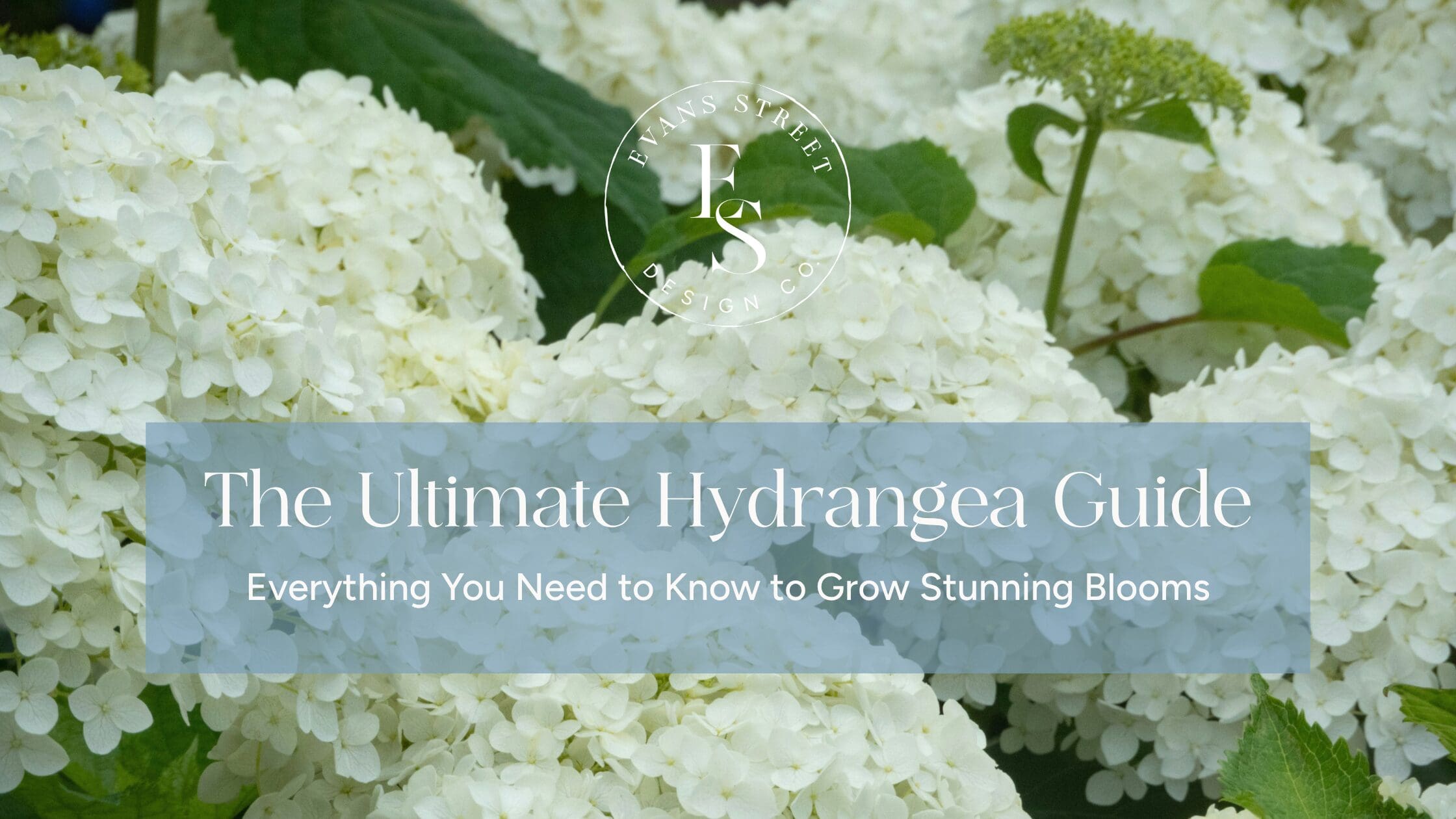
The Ultimate Hydrangea Guide: Everything You Need to Know to Grow Stunning Blooms
June 10, 2025
Discover how to grow, prune, and care for hydrangeas with confidence. Our ultimate hydrangea guide covers everything from bloom color changes to pruning tips, ideal for gardeners of all experience levels.
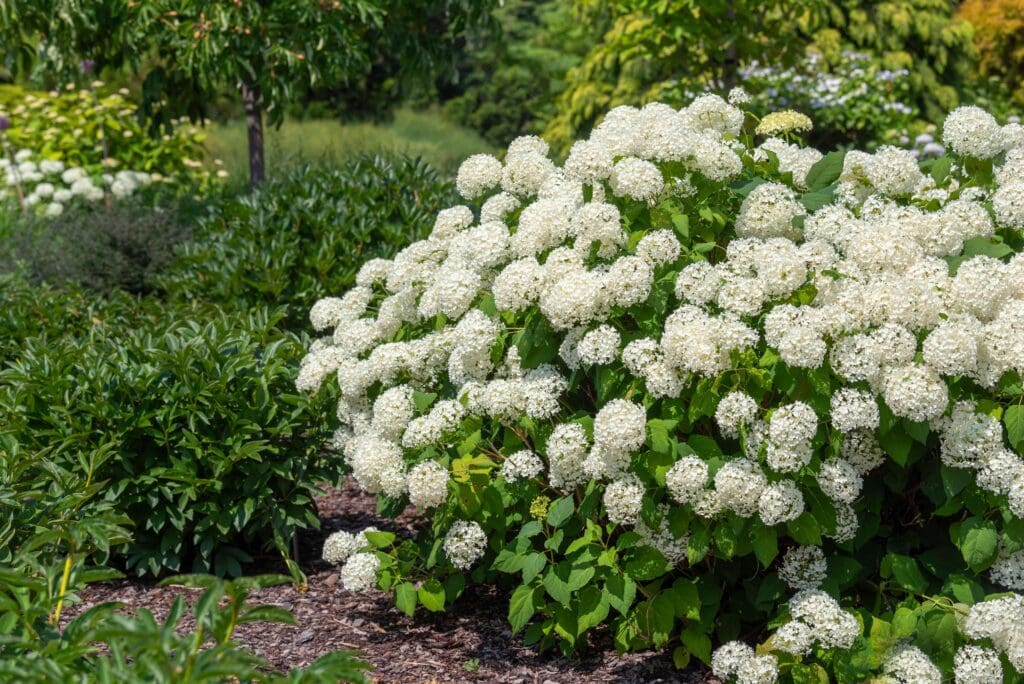
Hydrangeas have a way of stealing the show—and for good reason. With their lush blooms, generous size, and seasonal drama, they bring timeless elegance to any landscape. But as much as we love them, they often leave gardeners scratching their heads.
When do I prune? Why aren’t they blooming? Can I make them turn blue?
Whether you’re planting your very first hydrangea or looking to refine your approach, this guide is designed to walk you through every question and season of care. At Evans Street Design Co., we believe gardening should feel both approachable and inspiring—like a beautiful conversation with nature. So, let’s dig in.
Choosing the Right Hydrangea for Your Garden
Not all hydrangeas are created equal. Each variety has its own light and climate preferences, bloom patterns, and pruning needs. Here are a few favorites and the zones they love:
- Bigleaf Hydrangea (Hydrangea macrophylla): Famous for color-changing blooms—blue in acidic soil, pink in alkaline. Zones 6–9.
- Panicle Hydrangea (Hydrangea paniculata): Cone-shaped blooms that shift from white to deep pink. Great for full sun and colder climates. Zones 3–8.
- Smooth Hydrangea (Hydrangea arborescens): The beloved ‘Annabelle’ variety thrives in partial shade and blooms on new wood. Zones 3–9.
- Oakleaf Hydrangea (Hydrangea quercifolia): Striking foliage and white-to-pink cone flowers. A woodland favorite. Zones 5–9.
- Mountain Hydrangea (Hydrangea serrata): Compact, cold-hardy, and perfect for smaller spaces. Zones 6–9 (some down to 4).
Watering + Soil Tips: Keeping Hydrangeas Happy
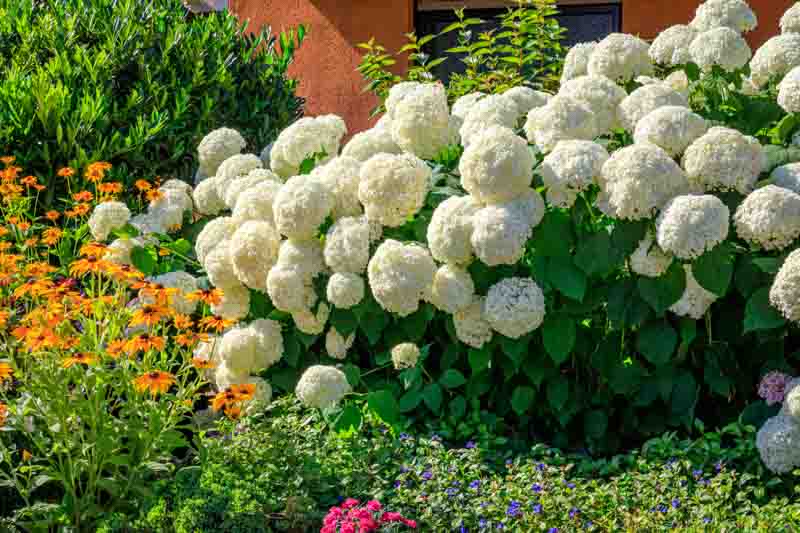
Hydrangeas love moisture—but they don’t want to sit in soggy soil. Here’s how to strike the right balance:
- Water deeply when the top inch of soil is dry.
- Always water at the base (not over the top).
- Use mulch to lock in moisture and regulate soil temperature.
- If your hydrangeas are in containers, check them more often—they dry out quickly!
And yes—you can influence bloom color!
- To go blue, lower the pH using aluminum sulfate.
- To go pink, raise the pH using garden lime.
(Pro tip: Only bigleaf and mountain varieties respond to pH changes.)
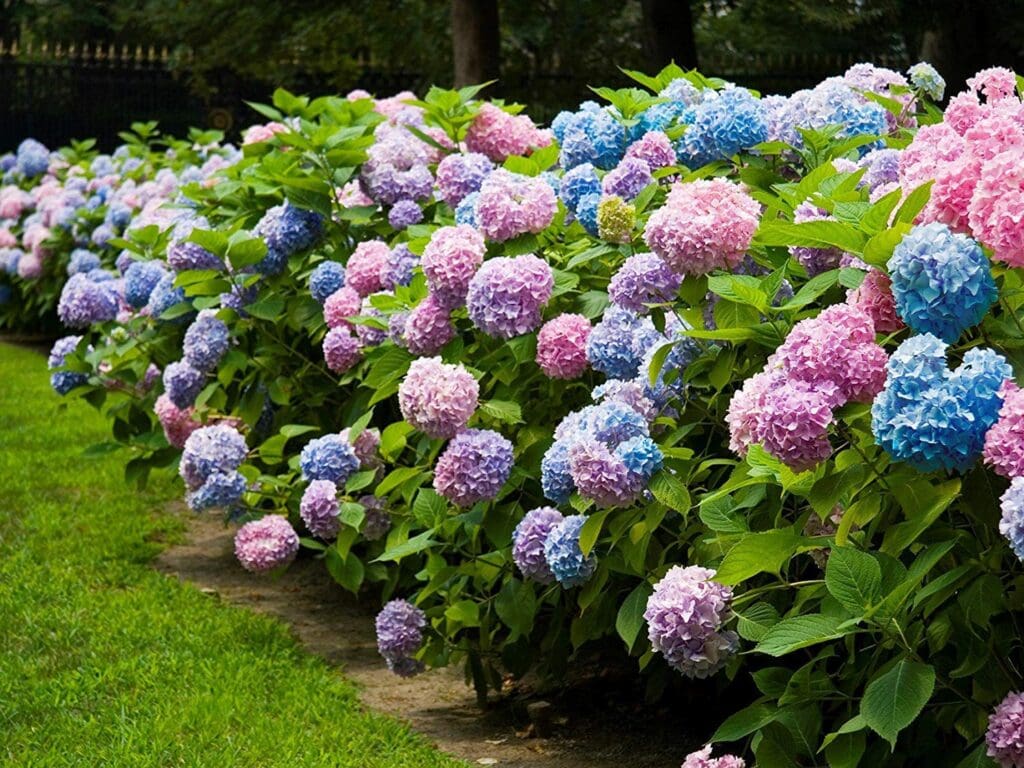
When and How to Prune Hydrangeas
One of the most common mistakes gardeners make with hydrangeas? Pruning at the wrong time. It all comes down to whether your plant blooms on old wood or new wood:
- Old wood (Bigleaf, Oakleaf, Mountain): Prune just after flowering—usually late summer.
- New wood (Panicle, Smooth): Prune in late winter or early spring before new growth starts.
Use clean, sharp pruners, and avoid heavy pruning unless you’re controlling size. Always remove dead, diseased, or crossing branches to promote airflow.
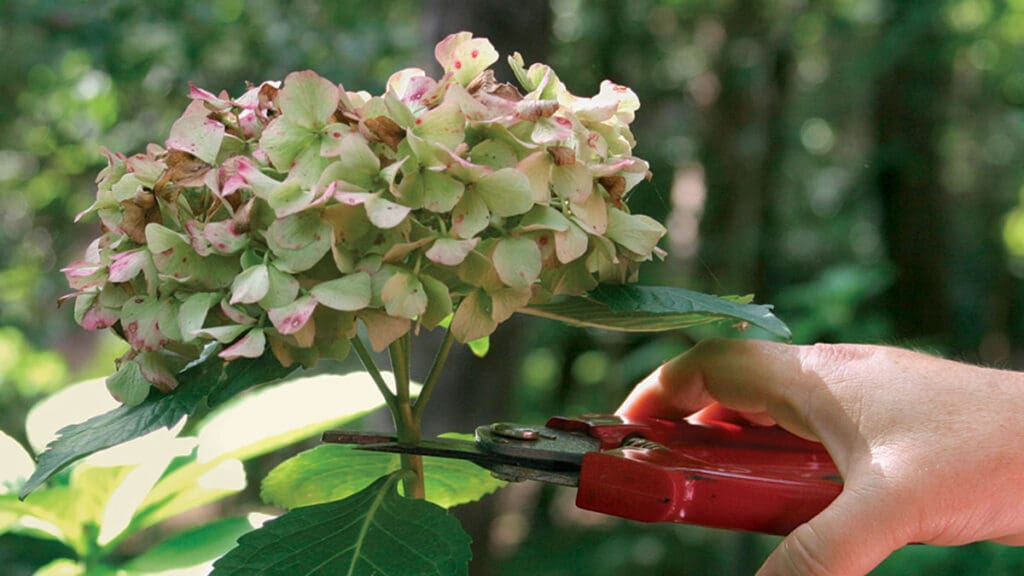
Fertilizer & Bloom Boosters
Hydrangeas don’t need a complicated feeding schedule, but they do appreciate a little support—especially if you want abundant blooms. Aim to fertilize in:
- Early spring (leaf-out)
- Early May
- Late June (if needed)
Use a slow-release, balanced fertilizer—look for one with a 10-10-10 or 14-14-14 NPK ratio. And don’t overdo it: too much nitrogen can lead to leafy plants with few flowers. If your hydrangeas are lush but bloom-less, consider taking a year off from fertilizing and instead enrich the soil with compost.
Cut Flower Tips: Keeping Blooms Fresh Indoors
Want to enjoy your hydrangeas in a vase? Here’s a florist’s trick:
Dip the cut end of the stem in alum powder (yep—the kind from the pickling aisle) before placing it in water. This helps the stem absorb more moisture and keeps your blooms looking fresh longer.
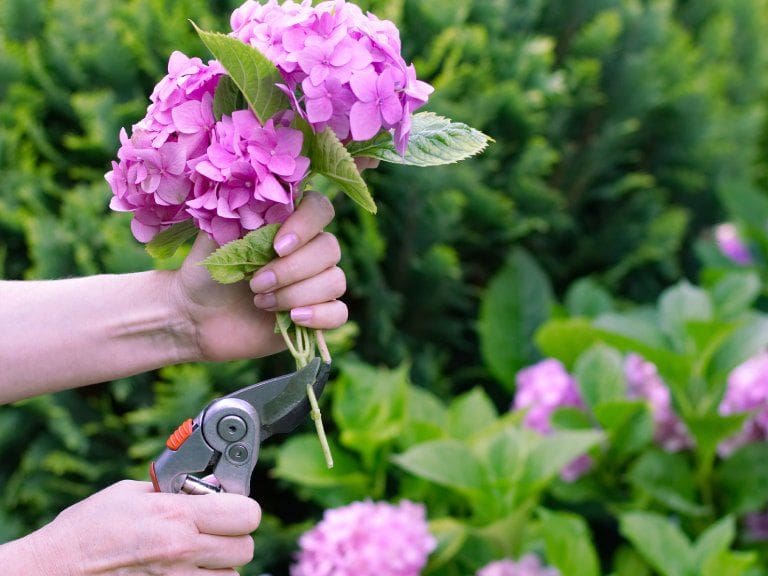
Hydrangeas are generous plants. Give them the right environment and a little thoughtful care, and they’ll reward you with season after season of beauty. Whether you’re designing a refined border garden, filling a statement container, or just experimenting with bloom colors in your backyard, there’s a hydrangea for your space—and now, you’ve got the guide to make it thrive.
Download the full Ultimate Hydrangea Guide
Ready to get planting? Explore our landscape design services or kitchen garden consults at Evans Street Design Co.